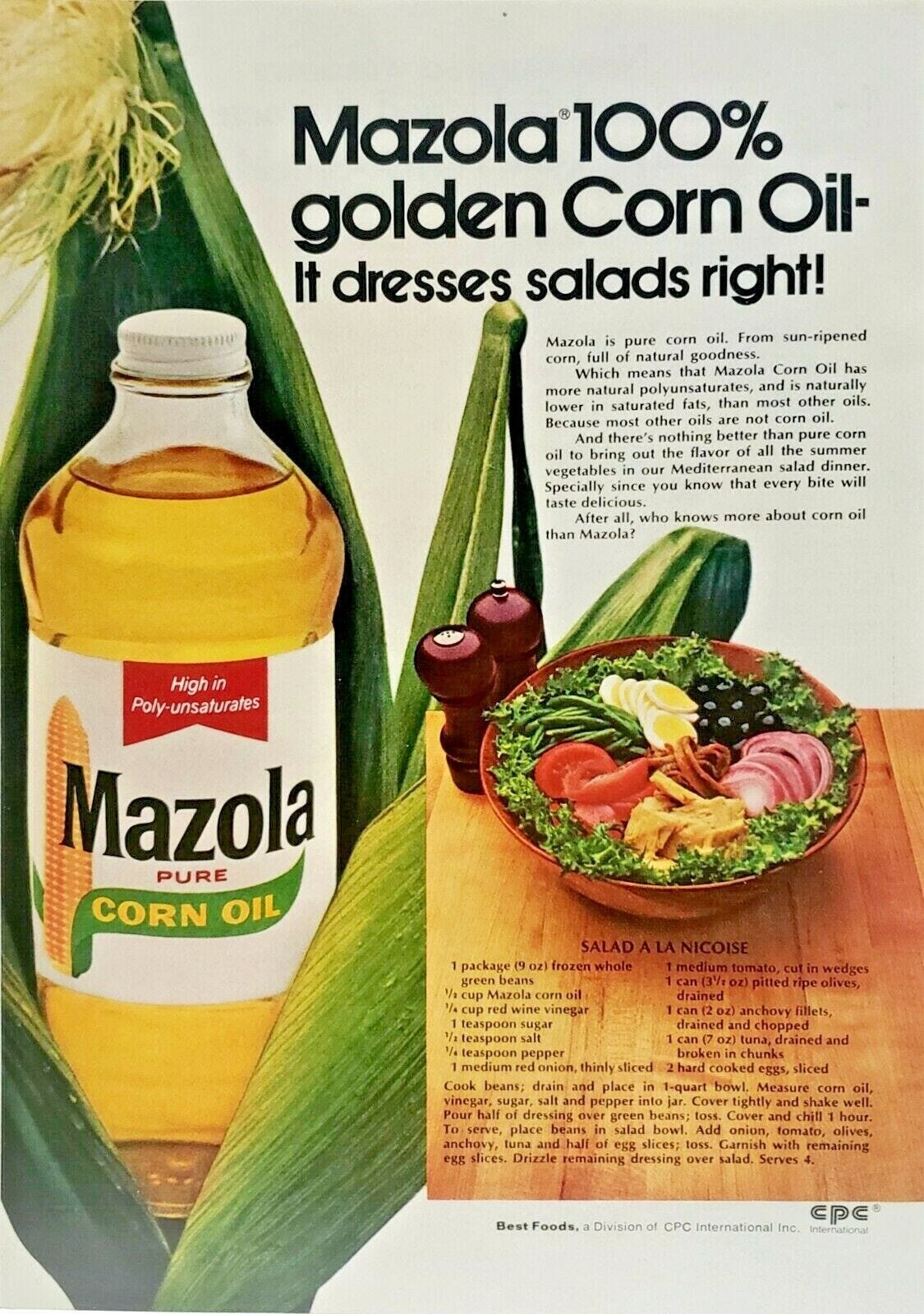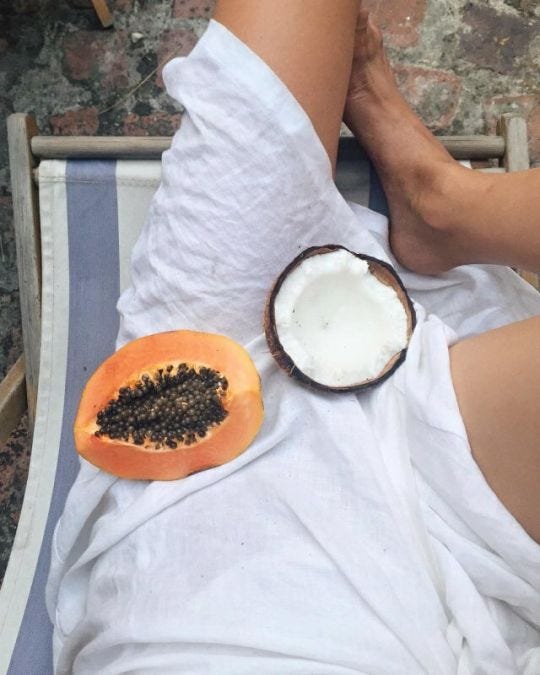Which Oils are Seed Oils?
An rundown of healthy fats and harmful seed oils
At this point, we all know that seed oils = bad.
But there remains some confusion about which oils are Seed Oils.
In this post we will cover, once and for all, all the different seed oils, where they come from, and where they are most likely to be found.
Industrial Seed Oils
Many oils come from seeds. But not all oils that come from seeds are Seed Oils, in the pejorative sense of the term.
Industrial seed oils, aka vegetable oils, are oils extracted from seeds, and are called "industrial" because of the heavy processing involved in their production.
They are problematic for two reasons:
They come from an industrial process, which requires high heat, chemical solvents, bleaching, and deodorizing
The resulting oil is concentrated from tons of seeds, and used in doses that are far higher than you would ever obtain by eating the seeds themselves
The oils (i.e., poly-unsaturated fatty acids) in seeds are inflammatory and detrimental to human biology, full stop. But the dose makes the poison, and if you just ate a handful of seeds, you’d never consume those oils in quantities large enough to do much damage.
Problems emerge when industrial processing, involving inherently unhealthy methods, concentrates these oils into doses that are exceedingly unnatural.
This is the reason why Seed Oils (TM) should be avoided like the plague, above and beyond the aversion you might have toward seeds themselves, or the un-processed, non-industrial oils from seeds that have been traditionally consumed by many cultures.
The Main Industrial Seed Oils
There are nine Seed Oils, ubiquitous in modern processed foods, that were never consumed in appreciable quantities by anyone alive a mere 120 years ago.
They are:
Soybean Oil: Extracted from the seeds of the soy plant, soybean oil is one of the most widely used oils in the world, particularly in processed foods. It's often used for frying, baking, and in salad dressings. It’s found in most mayos and “aiolis”, and is likely the worst of the seed oils due to the high levels of PUFA, plant-estrogens, and pesticides involved in production.
Canola Oil: Canola oil comes from the seeds of the rape plant. Thus it’s also called rapeseed oil, although the Canadians, who lead the world in production, thought that name wouldn’t sell very well. So they renamed it Canola a portmanteau of Canada and Oil. It's known for its nondescript flavor, smooth texture, and high smoke point, making it a popular choice for frying and sautéing.
Corn Oil: Derived from the germ of corn, corn oil is commonly used in frying due to its high smoke point. It's also a key ingredient in many margarines. Corn oil is not terribly popular today, but was one of the first seed oils promoted by Big Seed in the 1950s.
Cottonseed Oil: Cottonseed oil, as the name suggests, is extracted from cotton seeds. It's often used in processed foods and is a primary ingredient in shortening/margarine. It was in fact the first seed oil industrially produced, since cotton seeds were an unused byproduct of American cotton production and cotton conglomerates wanted to make some extra cash from the otherwise wasted seeds.
Sunflower Oil: Extracted from sunflower seeds, this oil is known for its light taste and frying capabilities. It's also used in baking and in cosmetic formulations due to its supposed moisturizing properties. It’s most commonly found in commodity tortilla chips (yes, even the “organic” ones)
Safflower Oil: Made from the seeds of the safflower plant, this oil is flavorless and colorless, making it a versatile choice for cooking and baking. It’s mostly produced in the US, and is considered among the more “high end” seed oils, finding its way into many “health” foods that “care” about their ingredients.
Grapeseed Oil: Grapeseed oil is derived from the seeds of grapes, often after winemaking. It's used in cooking and also has various cosmetic uses. It too is often sold as a “high-end” seed oil fit for bougie kitchens.
Peanut Oil: Extracted from peanuts, this oil has a strong flavor and is often used in Asian cooking, especially for frying. It’s also the oil of choice for the deep fryers in five guys. It is considered to be among the least bad seed oils because of its relatively lower PUFA content.
Rice Bran Oil: Extracted from the hard outer layer of rice, rice bran oil has a mild flavor and is commonly used in Asian cuisines. It’s also used in high-end packaged foods that don’t want to sound like they use crappy oils (won’t name names)
These nine oils constitute the most damaging seed oils you are likely to encounter. All are the byproduct of intensive industrial processing, and none of them were consumed in appreciable quantities prior to the invention of such technology.
If you want to avoid seed oils, these are the oils to eliminate completely.
Other Seed Oils
That being said, there are several oils which come from seeds that are not often grouped into this category.
Some are worse than others, so it’s good to be aware of them so you can make educated choices:
Olive Pomace Oil: this is the sloppy seconds of olive oil, which contains the oils from the pit of the olive (a seed). Anyone trying to feed you this doesn’t have food quality in mind
Jojoba Oil: Commonly used in skin products, it’s very high in MUFAs, similar to olive oil. You don’t need to avoid it, but I wouldn’t necessarily seek it out— I prefer tallow for skin.
Flax/hemp/chia oil: Even worse than normal seed oils, although often not used for cooking. Learn more here
Black Seed Oil: Used for its supposed medicinal properties. There is a big difference between consuming something for food vs. medicine. There may be some value to it, but it’s important to know how it works. I wrote something about this here
Sesame Oil: A traditional, cold pressed oil that is used primarily for flavoring, not cooking. Given the usage amount and frequency, I wouldn’t worry too much about this one.
Macadamia Nut Oil: Has a similar fatty acid profile to olive oil, despite coming from a seed. I don’t see why you should go out of your way to eat it, but it’s probably fine.
Fruit Oils
Not all plant oils are Seed Oils.
In addition to the seeds, oils can also come from the fruits of certain plants. Usually, the oil-bearing fruits are found in warmer climates (hence the term “tropical oils”).
This is because in those climates, oils that are more saturated are liquid, and plants require their oils to remain in liquid form.
These oils are generally safe, except where noted.
Coconut Oil: This is one of the most saturated oils out there, as are most tropical oils (i.e., plant oils that come from tropical areas). It comes from the fruit of the coconut. I personally don’t like the taste, but there is no concern regarding PUFAs with this.
Palm Oil: Very similar to coconut oil, it is not high in PUFAs, although it is generally cheap and low quality. Harvesting is immensely destructive to southeast asian rainforests. I would avoid because there are much better options, but it’s perfectly safe from a PUFA perspective.
Olive Oil: This oil comes from the fruit of the olive, not the seed. It is high in Mono-unsaturated fats, which are not prone to degradation in the same way PUFAs are. Very safe to consume, provided it is real and not laced with seed oils. Supply chain integrity matters.
Avocado Oil: It comes from the avocado fruit and is similar in composition to olive oil, so theoretically it is fine to consume. However, it suffers from even worse supply chain integrity than olive oil, and over 80% on the market is fake (laced with seed oils) or rancid. This is likely due to the fact that it comes from rotten avocados, which are grown on farms owned by Mexican drug cartels. I would avoid, because the chances are high that you’re just eating expensive seed oils.
Cocoa Butter: Another tropical oil, it is very high in saturated fats and is among the best plant oils. It’s most often used in chocolate, skincare, and baking
Animal Fats
To fully round out this list, let’s look at the last group of fats which come from animals. Hard to confuse these with seed oils, but there are some nuances that are worth noting:
I quit my job to help make the world a healthier place. Please consider becoming a paid subscriber of Tan Land to support my work and to gain access to my full archive of articles designed to help you live a healthier, more enjoyable life.
Beef/lamb/bison/deer fat (tallow): The fat from all ruminant animals is very similar. High in saturated fat, high in fat soluble vitamins, and an important part of nose-to-tail eating. These are the ideal oils for frying, no doubt about it.
Lard: Like tallow, but from pigs. Industrial pigs are fed literal garbage, so I would only eat lard if it’s from a farmer I trust who feeds the pigs a diverse diet that is low on corn and soy
Poultry fat (duck fat, schmaltz): Similar to lard, it is fine in theory, but most available is low quality. Great to use if the farmer does a good job.
Butter/ghee: Dairy quality is super important, but it’s not too hard to find the good stuff. If you have it, there is nothing better for baking, sauteeing, and general kitchen cooking. Watch out for butter substitutes or “whipped butter” though— both are laced with seed oils.
Conclusion
And that, dear reader, is the scoop on all the oils you are likely to come across. You now have the knowledge to be a bona-fide seed oil disrespecter.
Here is a brief summary:
The industrial oils are to be avoided at all costs
The only plant oils that are good are coconut oil, extra virgin olive oil, and cocoa butter
The best animal oils come from cows (or similar animals): tallow and butter/ghee
Let me know if I missed anything, and I’ll edit the post to include it.





Hi, I was wondering if you had an opinion about Andreas Seed Oils? I remember hearing a podcast (don't remember whose) where the presenter had all the same views as yours about industrial seed oils, but made an exception for Andreas Seed Oils which are organic, cold-pressed, and reputed to have various health benefits. But, having read a couple of your other articles about flax and black seed oils, I can probably guess what you'll say! (I love using their pumpkin seed oil with a few drops of fennel seed oil on my skin. Pretty amazing results.)
Can you provide more details about Jojoba oil as a PUFA what research you have on that. Most of the research I have found says it is below 3% polyunsaturated fats, primarily monounsaturated, very low in triglycerides, etc. Thanks and love your work!